If you’ve ever made almond milk at home, you know it consists of two primary ingredients; almonds and water.
So why do you see ingredients like tricalcium phosphate when you buy almond milk from the store?
All-natural almond milk has low calcium levels, so commercial brands add tricalcium phosphate to ensure you consume enough calcium from their beverage.
While this will increase your calcium intake, too much tricalcium phosphate can negatively affect your health.
Read on for a deeper breakdown of what tricalcium phosphate is, whether or not it’s safe to consume, and why it’s a common ingredient in almond milk.
What Is Tricalcium Phosphate?
Tricalcium phosphate is a concentrated form of calcium that is often found in supplements and used as a food additive.
Its primary use is to provide you with a healthy dose of calcium if you can’t get enough of the mineral in your diet.
Is Tricalcium Phosphate Natural or Synthetic?
Tricalcium Phosphate can be both naturally and synthetically produced.
The mineral can be considered synthetic in terms of its role as a food additive.
Phosphate rocks and calcium from natural plant sources are broken down and combined through a chemical process using ammonia.
Natural tricalcium phosphate from sources like bone meal, animal skeletons, and animal teeth is not utilized in food products.
Instead, they’re used in other industries like agriculture and cosmetics.
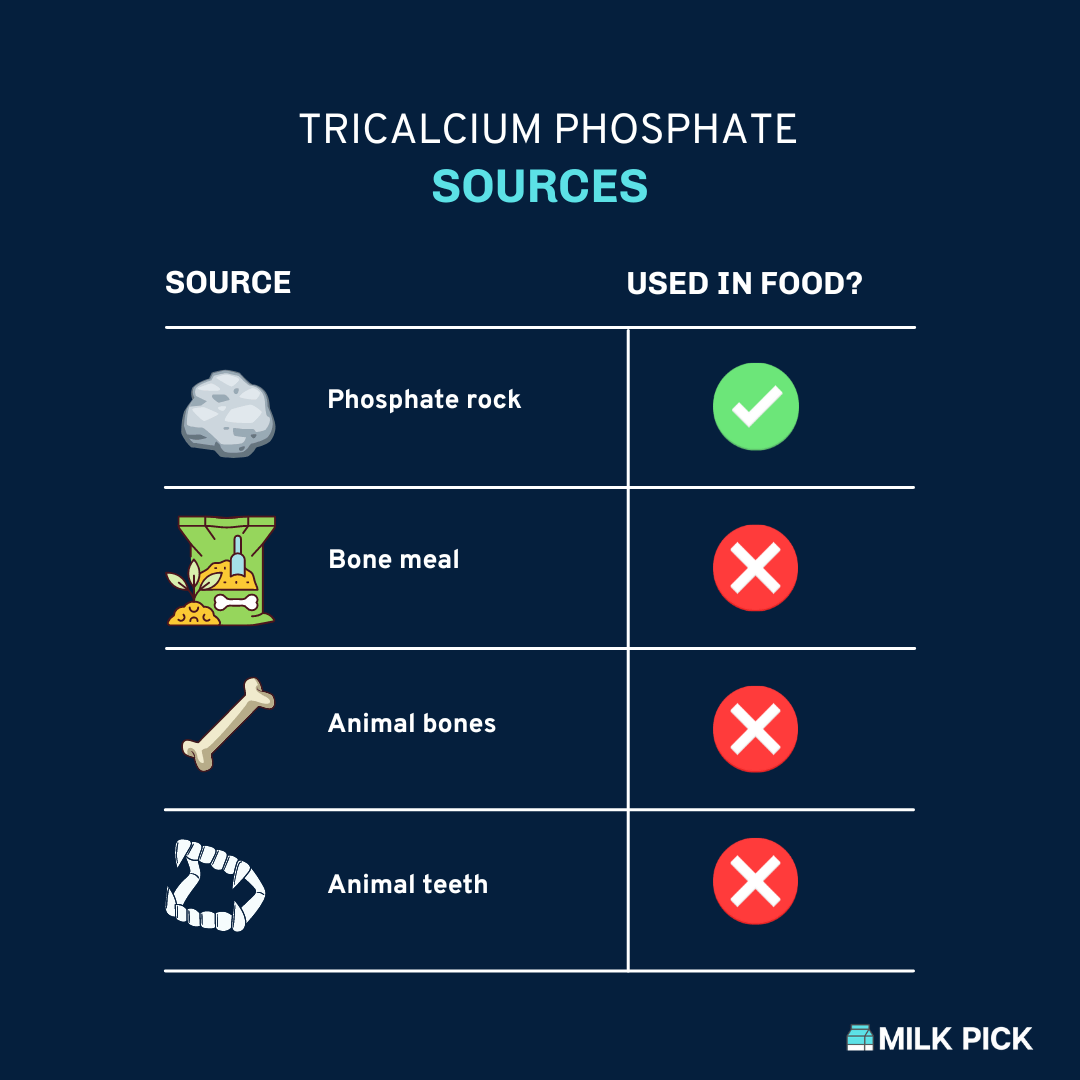
Is Tricalcium Phosphate Vegan?
The food additive tricalcium phosphate is chemically synthesized from phosphate rocks and calcium compounds.
It is free from any animal products and is allowed to be used in both vegan and organic foods within the US.
What Does Tricalcium Phosphate Do To Your Body?
Tricalcium phosphate aids in cell function and bone health. It also serves as a support for good energy production. It helps prevent calcium deficiency, which results in brittle bones, muscle pain, impaired memory, and other unfavorable effects.
For the most part, it is safe to consume and is widely used in the food industry.
However, it can cause side effects and unwanted outcomes for some. If taken unregulated, you may suffer from hypercalcemia or high calcium levels.
If you do, the following are some symptoms you may experience:
- Nausea
- Vomiting
- Constipation
- Stomach and muscle pain
- Weakness or fatigue
- Excessive urination, which may be followed by dehydration
- Thirst
Why Is Tricalcium Phosphate in Almond Milk?
Almond milk is a popular plant-based alternative to cow’s milk, but it's inherently lacking in terms of calcium content.
Plain non-fortified almond milk only contains about 2mg of calcium, which is a far cry from the suggested dose your body needs.
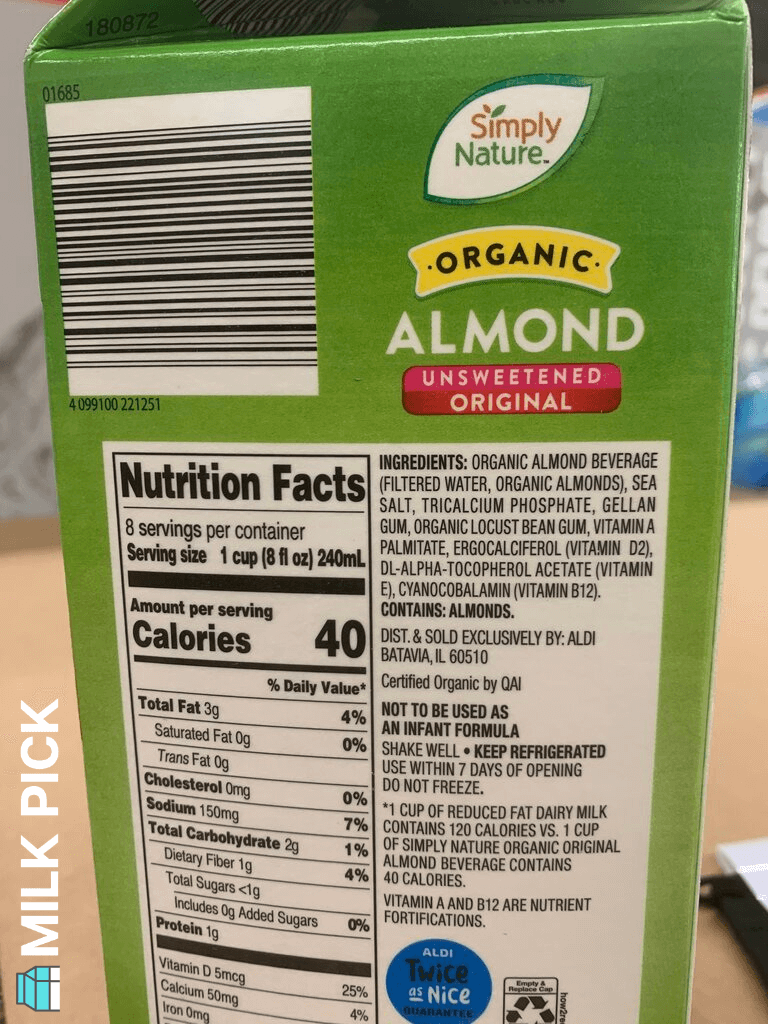
How Much Calcium Do You Need?
Healthcare professionals recommend regulated calcium intake in your daily diet, and one of its most common sources is dairy milk.
The National Institutes of Health recommends that a person consume the following doses depending on age.
Age | Recommended Daily Calcium |
|---|---|
0 to 6 months | 200 mg |
7 to 12 months | 260 mg |
1 to 3 years | 700 mg |
4 to 8 years | 1,000 mg |
9 to 18 years | 1,300 mg |
19 to 50 years | 1,000 mg |
51+ years | 1,200 mg |
Consuming enough calcium is essential to keep your bones healthy.
It’s also vital in the following bodily operations.
- Regulates blood flow
- Helps in nerve cell communication
- Aids in blood clotting
- Contributes to muscle contraction
- Helps regulate heart rhythms
Calcium Needs Vitamin D For Absorption
If you want to get the full benefit of calcium in almond milk, look for brands that are also fortified with Vitamin D.
Vitamin D is important in digestion as it enhances the absorption rate of calcium and phosphorus in your gut.
One of the most significant risks in taking tricalcium phosphate is overconsumption.
You should know that it’s a concentrated form of calcium. If not digested and absorbed properly, your body may have some issues.
When To Avoid Tricalcium Phosphate
If you have kidney disease, food with tricalcium phosphate and rich in phosphorus are not for you.
Your kidneys have a harder time removing phosphorus from your system, and unnecessarily adding this to your diet may worsen the situation.
Also, take caution in consuming tricalcium phosphate if you’re on medication like antacids, vitamin D supplements, and others.
Try alternative ways to regulate your calcium levels with your healthcare provider. You may also opt for almond milk brands without it.
Related: What is Calcium Carbonate?
Almond Milk Brands Without Tricalcium Phosphate
Although almond milk with tricalcium phosphate can provide you with calcium, it has its downsides.
If you’d prefer almond milk without tricalcium phosphate, here are some brands to consider.
1. Three Trees
As close as you can get to making almond milk yourself. Three Trees is made with two simple ingredients, almonds and water.
It naturally contains 66 grams of calcium per serving which is 6% of the daily recommended intake.
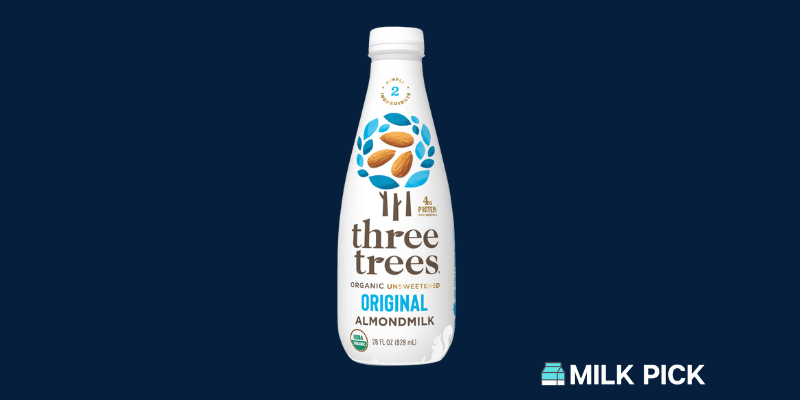
2. Mooala Shelf Stable Almond Milk
Mooala almond milk contains 10% calcium derived from calcium carbonate, which helps provide you with sufficient mineral levels.
While it contains a low amount of gellan gum, you should know that it’s a tested and proven-safe food additive by the World Health Organization.
With its innovative packaging, you can store this Mooala almond milk on your shelves.
It's a sugar-free formulation and a great option if you're trying to lose weight.
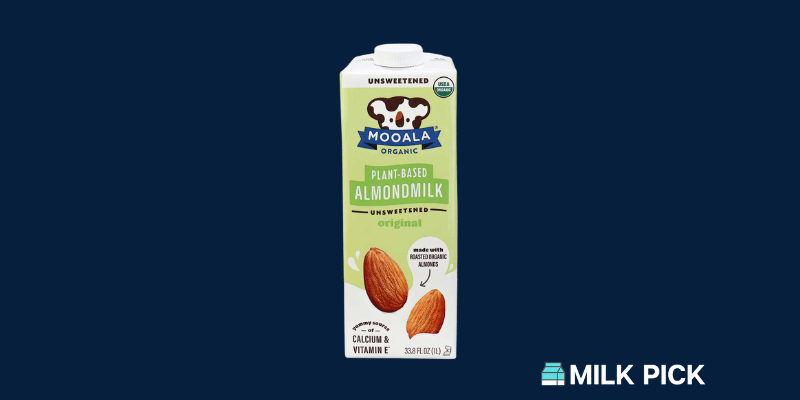
3. Malk Almond Milk
Vegan and all-organic ingredients make Malk almond milk a healthy choice to mix with smoothies and coffee or drink as is.
They’re made with three simple ingredients, water, almonds, and sea salt, so you never have to question the ingredients inside your Malk milk.
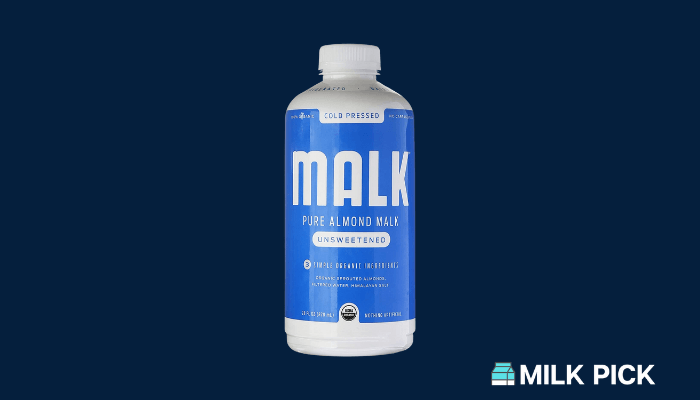
Non-dairy Calcium-rich Foods To Include in Your Diet
You may opt for almond milk if you want to avoid dairy.
Since non-fortified almond milk cannot provide you with enough calcium, pairing it with foods that are naturally rich in the mineral will help to ensure you have enough in your diet. Here are some calcium-rich foods you can consider.
1. Tahini
Tahini has been popular in Mediterranean cuisine for centuries, but it recently started making waves in the U.S.
Made from sesame seed, tahini contains a whopping 154 mg of calcium per tablespoon and less than 100 calories!
Drizzle some tahini over protein, salad, or use it as a dip to get a quick boost of calcium in your diet!
Pro tip: Tahini should be smooth and pourable, not thick and chunky!
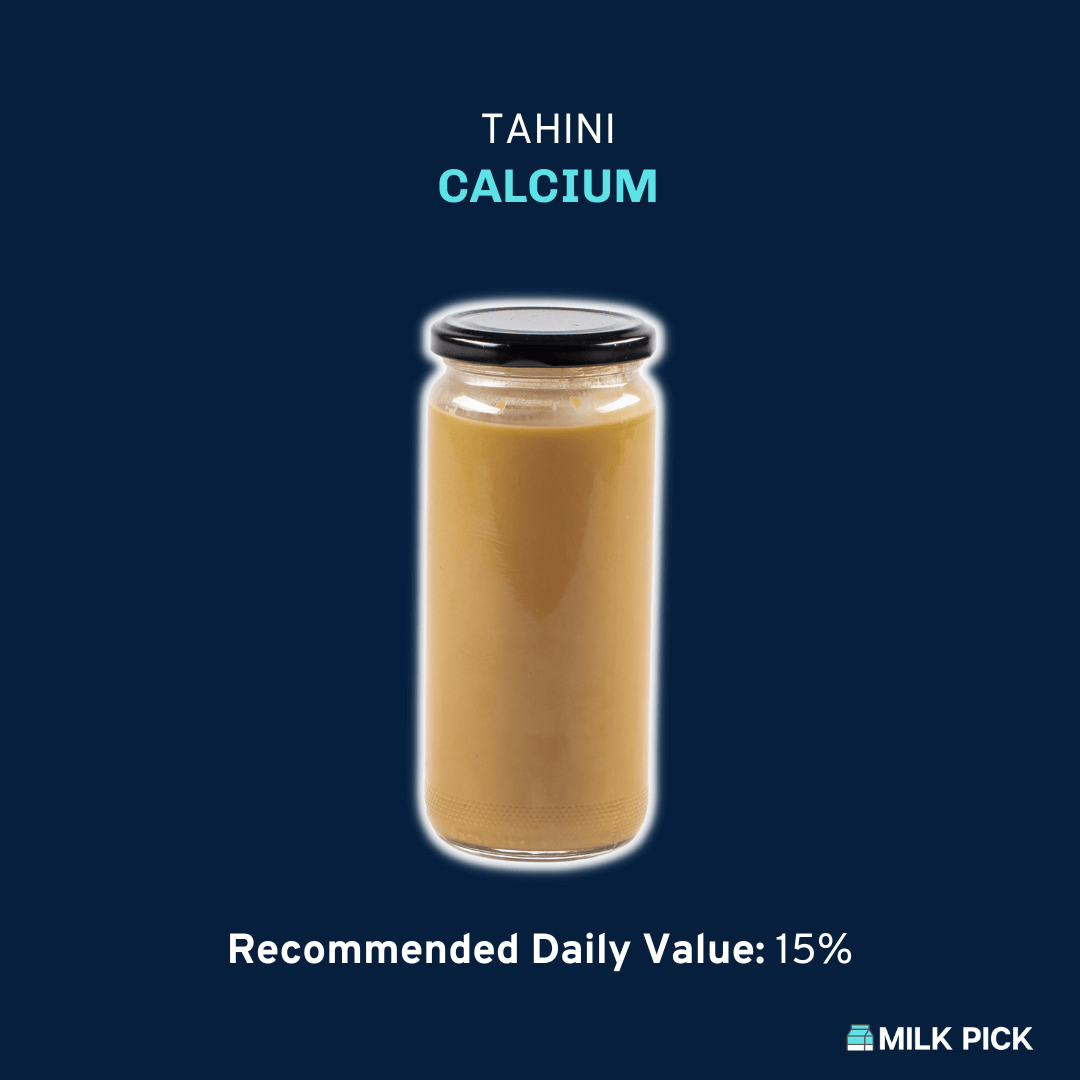
2. Tofu
Tofu can provide more than half of the recommended Daily Value of calcium in your diet—as much as 53% per 100 grams.
It also contains reasonable amounts of phosphorus, iron, zinc, and other nutritional components.
Tofu has phytates, which may reduce calcium absorption. But if paired with a highly-nutritional diet, it’s a healthy food you can take.
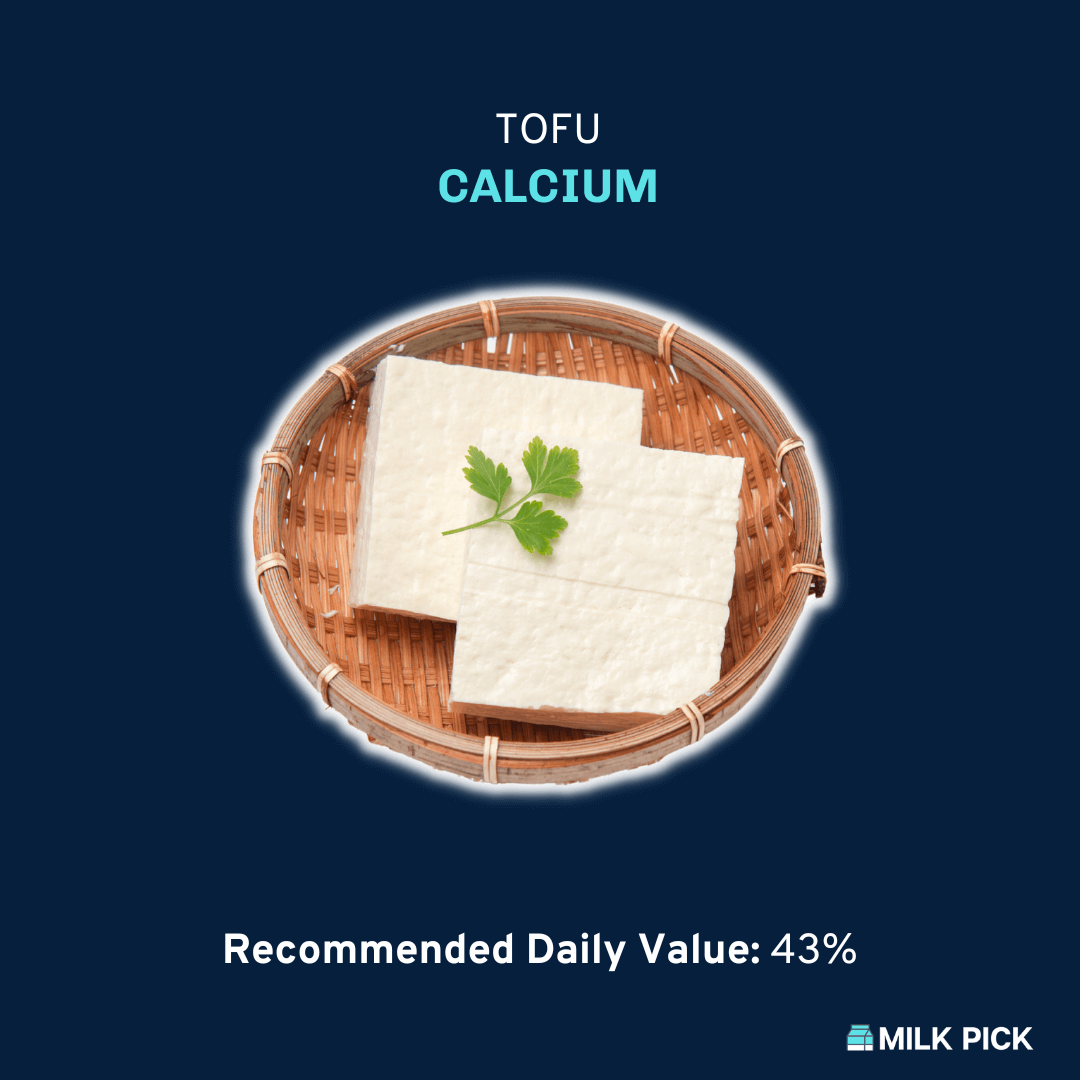
3. Spinach
Spinach is a very nutrient dense food, so it should come as no surprise that it's one of the most calcium-packed vegetables.
Cooked spinach contains 245 mg of calcium per serving, which is about 25% of the recommended daily for most adults.
Turn it into a salad, mix it in smoothies (with almond milk!), or have some on the side with your regular meals.
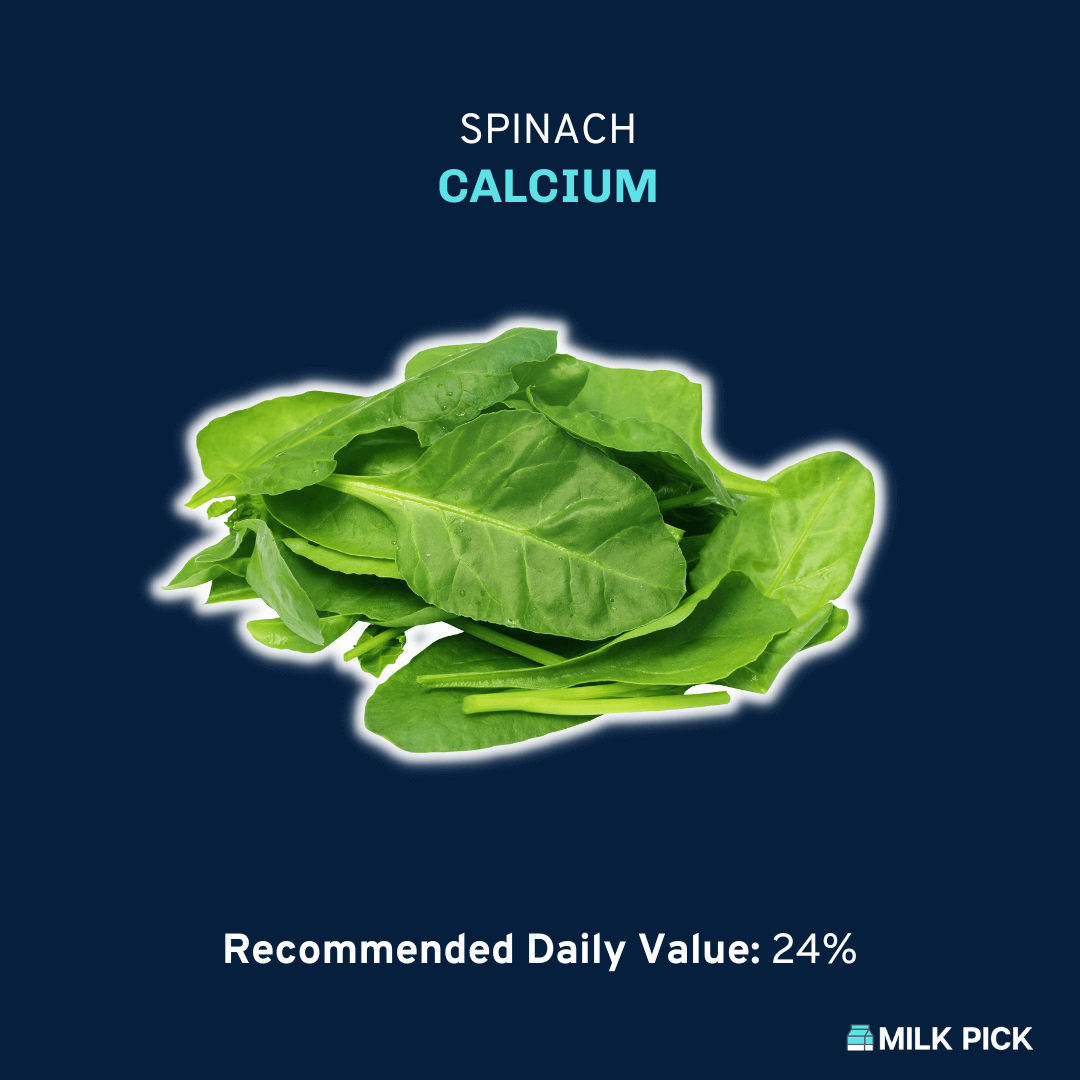
4. Dried figs
Figs contain 150 mg of calcium per 100 grams.
They are fruits with high potential in maintaining good vascular health, preventing constipation, and keeping skin healthy.
If you’re planning to add figs to your diet, first check if you have related allergies. It may also cause diarrhea for some people.
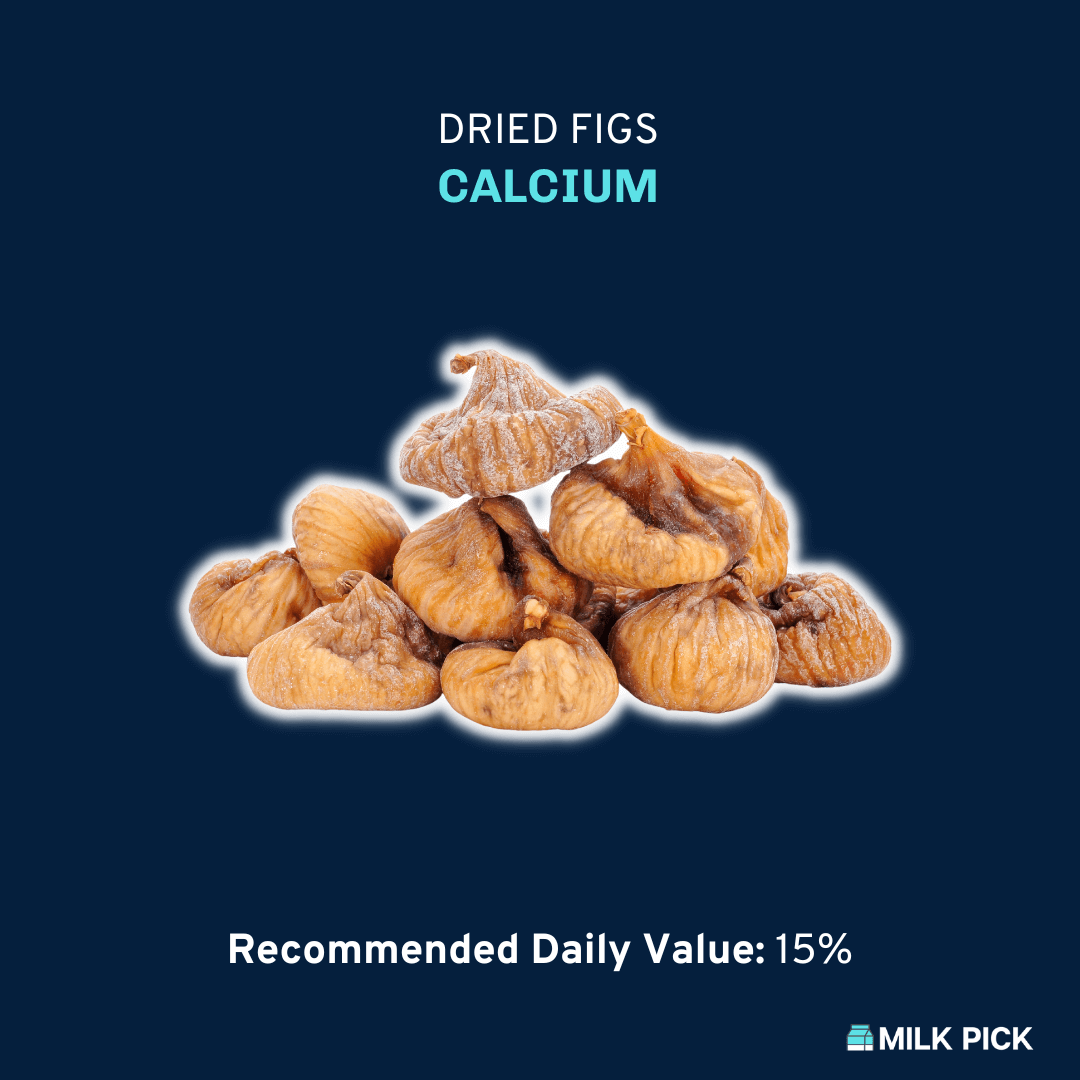
5. Collard greens
Collard greens and other leafy vegetables are great sources of calcium.
You can consume as much as 16% of the DV per 72-gram serving of such food. It also contains high levels of vitamin K, which may contradict blood-thinning medications.
You can eat collard greens raw, but I love to sauté them with butter and garlic.
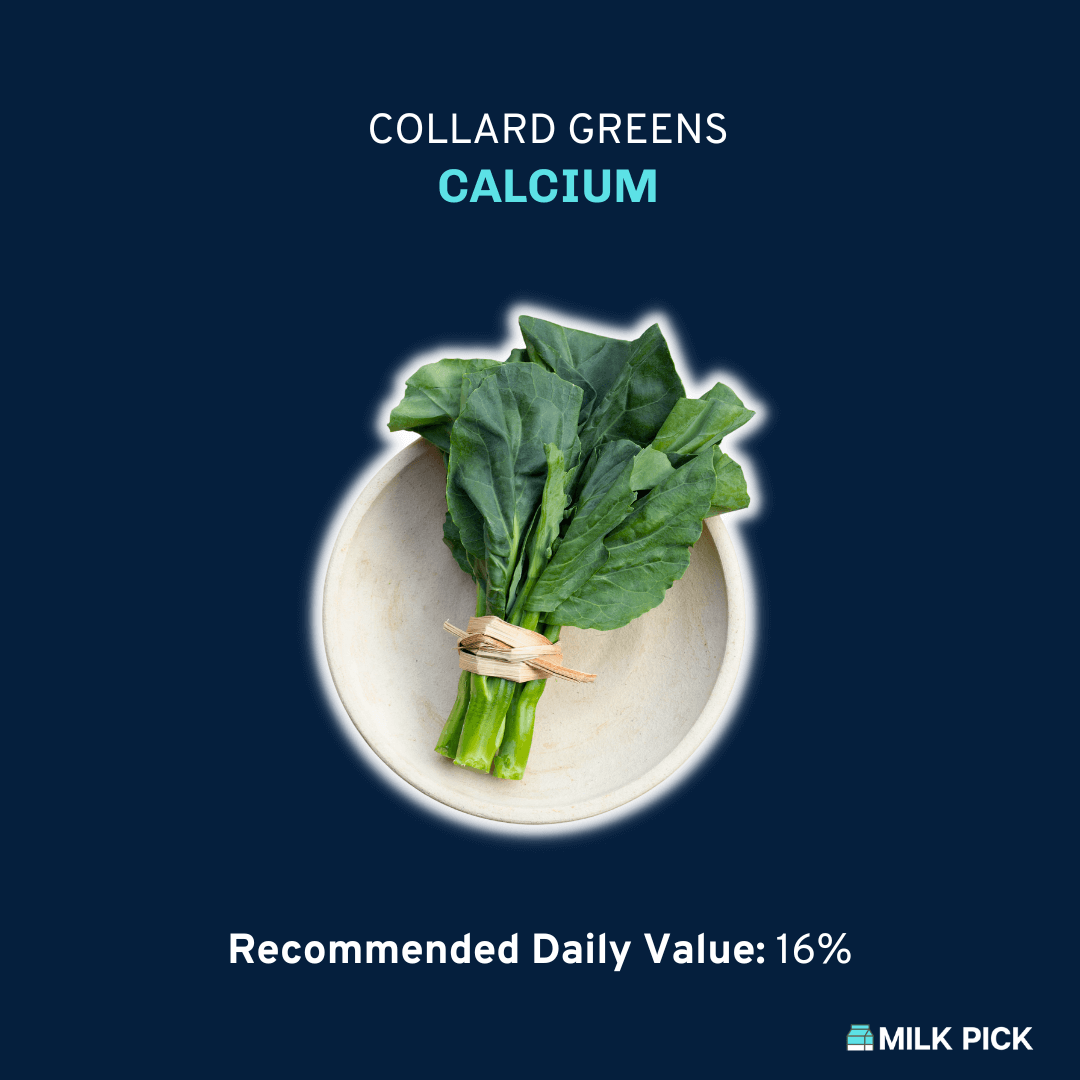
Get Your Calcium From the Right Sources
While tricalcium phosphate helps to increase your calcium intake it can have negative effects on particular individuals.
If you insist on consuming almond milk fortified with tricalcium phosphate, check that it’s also enriched with vitamin D to help your body absorb the influx of calcium.
Still, keeping your calcium levels balanced is best done with dietary calcium in small quantities at a time.
